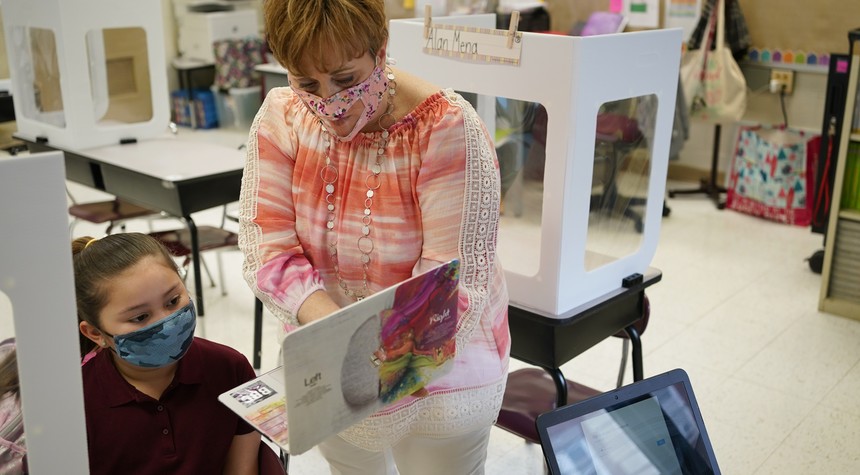Remote Learning Has Made the Reading Problems of Kids Worse
The Results Are in on the Effectiveness of Remote Learning During COVID
BY RICK MORAN
republished below in full unedited for informational, educational & research purposes:
Early reading skills — skills that often make the difference for children in the poorest schools — are at a 20 year low, according to one study. It’s not surprising considering that kindergarten was canceled in most public schools in 2020.
Now those kids have started school woefully underprepared to learn.
According to the New York Times, “In the Boston region, 60 percent of students at some high-poverty schools have been identified as at high risk for reading problems.” That’s twice the number of kids at high risk before the pandemic.
But the pandemic has only laid bare the catastrophic problem of reading in American schools. Sixty-two years ago when I entered first grade, reading was a matter of learning the rules of grammar and phonics. There were exceptions to those rules — “I” before “E” except after “C” was part of the drill — but for the most part, reading was a question of cognitive learning. Logic and memory were important to developing the skill of reading.
Today, kids don’t learn phonics — at least, not the way we used to. And public school districts across the country are desperate to find teachers who know the subjects of phonics and grammar well enough to teach children what they should have been taught years ago.
The literacy crisis did not start with the pandemic. In 2019, results on national and international exams showed stagnant or declining American performance in reading, and widening gaps between high and low performers. The causes are multifaceted, but many experts point to a shortage of educators trained in phonics and phonemic awareness — the foundational skills of linking the sounds of spoken English to the letters that appear on the page.
The pandemic has compounded those issues.
So why haven’t children been taught to “sound words out,” or follow the basic rules of phonics? It’s because back in the 1990s, a new way of teaching kids how to read swept the nation.
Related: Public School Kids Walk Out Nationwide to Protest School Staying Open
For decades, reading instruction in American schools has been rooted in a flawed theory about how reading works, a theory that was debunked decades ago by cognitive scientists, yet remains deeply embedded in teaching practices and curriculum materials. As a result, the strategies that struggling readers use to get by — memorizing words, using context to guess words, skipping words they don’t know — are the strategies that many beginning readers are taught in school. This makes it harder for many kids to learn how to read, and children who don’t get off to a good start in reading find it difficult to ever master the process.
The theory is called “Three Cueing,” which comes from the notion that readers use three different kinds of information — or “cues” — to identify words as they are reading. It was a dubious assertion from the start, but after it was proposed in 1967 by an education professor named Ken Goodman, it swept the academic education community and is now deeply embedded in the learning process of a majority of American children.
- graphic cues (what do the letters tell you about what the word might be?)
- syntactic cues (what kind of word could it be, for example, a noun or a verb?)
- semantic cues (what word would make sense here, based on the context?)
Goodman concluded that:
Skill in reading involves not greater precision, but more accurate first guesses based on better sampling techniques, greater control over language structure, broadened experiences, and increased conceptual development. As the child develops reading skills and speed, he uses increasingly fewer graphic cues.
This academic quack has been exposed as a dangerous charlatan as a result of the pandemic. In fact, for 200 years of American education, kids were taught to recognize sounds of letters and words, which gave them the tools to “sound a word out” themselves. Any parent can tell you that a child who learns this “whole word” approach to learning how to read does better than one who looks for “cues” in a word’s syntax or semantics.
Those opposed to this Three Cueing approach have been shoved to the sidelines despite the dismal results of reading scores over the last 30 years. They’ve been falling. And American public schools are failing catastrophically to fulfill their most important mission: Preparing children for the challenges of adulthood by giving them the most basic tools to succeed.

